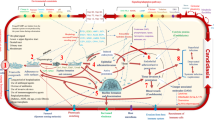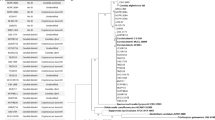Abstract
Ca2+ channel Cch1, and its subunit Mid1, has been suggested as the protein complex responsible for mediating Ca2+ influx, which is often employed by fungal cells to maintain cell survival. The abilities of morphological switch and response to stress conditions are closely related to pathogenicity in Candida albicans. Cch1 and Mid1 activity are required for virulence of Cryptococcus neoformans and Claviceps purpurea, respectively. To investigate whether Cch1 and Mid1 also play a role in the virulence of C. albicans, we constructed cch1Δ/Δ and mid1Δ/Δ mutant strains for functional analysis of CCH1 and MID1. Although both of the mutants displayed the ability of yeast-to-hypha transition, they were defective in hyphae maintenance and invasive growth. Interestingly, deletion of CCH1 or MID1 in C. albicans led to an obvious defect phenotype in oxidative stress response. Moreover, the virulence of the mutants was reduced in a mouse model. Our results demonstrated that Cch1 and Mid1 activity are related to the virulence of C. albicans and may provide a new antifungal target.





Similar content being viewed by others
References
Koh AY, Kohler JR, Coggshall KT, Van Rooijen N, Pier GB. Mucosal damage and neutropenia are required for Candida albicans dissemination. PLoS Pathog. 2008;4:e35.
Pfaller MA, Diekema DJ. Epidemiology of invasive candidiasis: a persistent public health problem. Clin Microbiol Rev. 2007;20:133–63.
Schuetzer-Muehlbauer M, Willinger B, Egner R, Ecker G, Kuchler K. Reversal of antifungal resistance mediated by ABC efflux pumps from Candida albicans functionally expressed in yeast. Int J Antimicrob Agents. 2003;22:291–300.
Lo HJ, Kohler JR, DiDomenico B, Loebenberg D, Cacciapuoti A, Fink GR. Nonfilamentous C. albicans mutants are avirulent. Cell. 1997;90:939–49.
Kumamoto CA. A contact-activated kinase signals Candida albicans invasive growth and biofilm development. Proc Natl Acad Sci USA. 2005;102:5576–81.
Bahn YS, Sundstrom P. CAP1, an adenylate cyclase-associated protein gene, regulates bud-hypha transitions, filamentous growth, and cyclic AMP levels and is required for virulence of Candida albicans. J Bacteriol. 2001;183(10):3211–23.
Cronin SR. I’ll simply die without my calcium: Ca(2+) signaling and surviving cellular stress. Mol Interv. 2002;2:284–5.
Bonilla M, Nastase KK, Cunningham KW. Essential role of calcineurin in response to endoplasmic reticulum stress. EMBO J. 2002;21:2343–53.
Bonilla M, Cunningham KW. Mitogen-activated protein kinase stimulation of Ca(2+) signaling is required for survival of endoplasmic reticulum stress in yeast. Mol Biol Cell. 2003;14:4296–305.
Cunningham KW, Fink GR. Ca2+ transport in Saccharomyces cerevisiae. J Exp Biol. 1994;196:157–66.
Liu M, Gelli A. Elongation factor 3, EF3, associates with the calcium channel Cch1 and targets Cch1 to the plasma membrane in Cryptococcus neoformans. Eukaryot Cell. 2008;7:1118–26.
Locke EG, Bonilla M, Liang L, Takita Y, Cunningham KW. A homolog of voltage-gated Ca(2+) channels stimulated by depletion of secretory Ca(2+) in yeast. Mol Cell Biol. 2000;20:6686–94.
Bormann J, Tudzynski P. Deletion of Mid1, a putative stretch-activated calcium channel in Claviceps purpurea, affects vegetative growth, cell wall synthesis and virulence. Microbiology. 2009;155:3922–33.
Liu M, Du P, Heinrich G, Cox GM, Gelli A. Cch1 mediates calcium entry in Cryptococcus neoformans and is essential in low-calcium environments. Eukaryot Cell. 2006;5:1788–96.
Jackson SL, Heath IB. Roles of calcium ions in hyphal tip growth. Microbiol Rev. 1993;57:367–82.
Sato T, Ueno Y, Watanabe T, Mikami T, Matsumoto T. Role of Ca2+/calmodulin signaling pathway on morphological development of Candida albicans. Biol Pharm Bull. 2004;27:1281–4.
Garrill A, Jackson SL, Lew RR, Heath IB. Ion channel activity and tip growth: tip-localized stretch-activated channels generate an essential Ca2+ gradient in the oomycete Saprolegnia ferax. Eur J Cell Biol. 1993;60:358–65.
Brand A, Shanks S, Duncan VM, Yang M, Mackenzie K, Gow NA. Hyphal orientation of Candida albicans is regulated by a calcium-dependent mechanism. Curr Biol. 2007;17:347–52.
Cyert MS. Genetic analysis of calmodulin and its targets in Saccharomyces cerevisiae. Annu Rev Genet. 2001;35:647–72.
Blankenship JR, Heitman J. Calcineurin is required for Candida albicans to survive calcium stress in serum. Infect Immun. 2005;73:5767–74.
LaFayette SL, Collins C, Zaas AK, Schell WA, Betancourt-Quiroz M, Gunatilaka AA, Perfect JR, Cowen LE. PKC signaling regulates drug resistance of the fungal pathogen Candida albicans via circuitry comprised of Mkc1, calcineurin, and Hsp90. PLoS Pathog. 2010;6:e1001069.
Reedy JL, Filler SG, Heitman J. Elucidating the Candida albicans calcineurin signaling cascade controlling stress response and virulence. Fungal Genet Biol. 2010;47(2):107–16.
da Silva Dantas A, Patterson MJ, Smith DA, Maccallum DM, Erwig LP, Morgan BA, et al. Thioredoxin regulates multiple hydrogen peroxide-induced signaling pathways in Candida albicans. Mol Cell Biol. 2010;30:4550–63.
Reiter TA, Rusnak F. Quantification of intracellular calcineurin activity and H2O2-induced oxidative stress. Methods Enzymol. 2002;353:70–81.
Ghosh MC, Wang X, Li S, Klee C. Regulation of calcineurin by oxidative stress. Methods Enzymol. 2003;366:289–304.
Bader T, Bodendorfer B, Schroppel K, Morschhauser J. Calcineurin is essential for virulence in Candida albicans. Infect Immun. 2003;71:5344–54.
Davis D, Wilson RB, Mitchell AP. RIM101-dependent and-independent pathways govern pH responses in Candida albicans. Mol Cell Biol. 2000;20:971–8.
Daniels KJ, Lockhart SR, Staab JF, Sundstrom P, Soll DR. The adhesin Hwp1 and the first daughter cell localize to the a/a portion of the conjugation bridge during Candida albicans mating. Mol Biol Cell. 2003;14:4920–30.
Birse CE, Irwin MY, Fonzi WA, Sypherd PS. Cloning and characterization of ECE1, a gene expressed in association with cell elongation of the dimorphic pathogen Candida albicans. Infect Immun. 1993;61(9):3648–55.
Alarco AM, Raymond M. The bZip transcription factor Cap1p is involved in multidrug resistance and oxidative stress response in Candida albicans. J Bacteriol. 1999;181(3):700–8.
Sanglard D, Ischer F, Marchetti O, Entenza J, Bille J. Calcineurin A of Candida albicans: involvement in antifungal tolerance, cell morphogenesis and virulence. Mol Microbiol. 2003;48:959–76.
Bader T, Schroppel K, Bentink S, Agabian N, Kohler G, Morschhauser J. Role of calcineurin in stress resistance, morphogenesis, and virulence of a Candida albicans wild-type strain. Infect Immun. 2006;74:4366–9.
Aramburu J, Heitman J, Crabtree GR. Calcineurin: a central controller of signalling in eukaryotes. EMBO Rep. 2004;5:343–8.
Sabie FT, Gadd GG. Involvement of a Ca2+ -calmodulin interaction in the yeast-mycelial (Y-M) transition of Candida albicans. Mycopathologia. 1989;108:47–54.
Cruz MC, Goldstein AL, Blankenship JR, Del Poeta M, Davis D, Cardenas ME, et al. Calcineurin is essential for survival during membrane stress in Candida albicans. EMBO J. 2002;21:546–59.
Lorenz MC, Bender JA, Fink GR. Transcriptional response of Candida albicans upon internalization by macrophages. Eukaryot Cell. 2004;3:1076–87.
Hwang CS, Rhie GE, Oh JH, Huh WK, Yim HS, Kang SO. Copper- and zinc-containing superoxide dismutase (Cu/ZnSOD) is required for the protection of Candida albicans against oxidative stresses and the expression of its full virulence. Microbiology. 2002;148:3705–13.
Martchenko M, Alarco AM, Harcus D, Whiteway M. Superoxide dismutases in Candida albicans: transcriptional regulation and functional characterization of the hyphal-induced SOD5 gene. Mol Biol Cell. 2004;15:456–67.
Acknowledgments
The authors would like to thank Dr Dana Davis for generously providing strains and plasmids. We are grateful to Jinying Chen, Linghuo Jiang and Ruoyu Li for providing plasmids and strains. We also want to thank the reviewers and editors for their constructive criticism and helpful suggestions. This work was supported by the National Natural Science Foundation of China (No.81171541,31070126), Natural Science Foundation of Tianjin (10JCYBJC09700).
Author information
Authors and Affiliations
Corresponding author
Additional information
Qilin Yu and Hui Wang contributed to this work equally.
Rights and permissions
About this article
Cite this article
Yu, Q., Wang, H., Cheng, X. et al. Roles of Cch1 and Mid1 in Morphogenesis, Oxidative Stress Response and Virulence in Candida albicans . Mycopathologia 174, 359–369 (2012). https://doi.org/10.1007/s11046-012-9569-0
Received:
Accepted:
Published:
Issue Date:
DOI: https://doi.org/10.1007/s11046-012-9569-0




